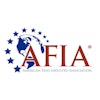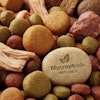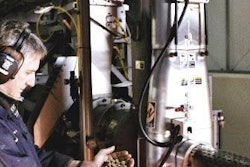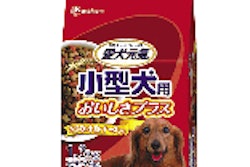The issue of mycotoxins in raw ingredients may be one of the most challenging for petfood manufacturers to successfully control. The very nature of mycotoxins makes them difficult to manage at best. There are many variables that must be considered. Each growing season is different; not every commodity is affected in the same way; contamination levels are measured in parts per million (ppm) and parts per billion (ppb); not all animals are effected by the same toxin in the same way; and, in addition to everything else, improper sampling and poor testing procedures can produce extremely costly inaccurate results. These variables are enough in themselves to cause any QA manager sleepless nights.
With all of these parameters, it is understandable why the mycotoxin issue is not only extremely troublesome, but also potentially very costly to manage. This article will briefly review some important concepts that can help.
What are mycotoxins, and where do they come from?
Mycotoxins are simply chemical compounds, more specifically, toxic chemical compounds that are produced by molds. The contamination process begins in the fields as crops are growing. Different molds favor different temperature and moisture conditions. This means that different weather conditions produce different toxins. Some molds, such as the ones that produce aflatoxin, thrive in hot, dry conditions. Other molds, such as the ones that produce deoxynivalenol (also known as DON or vomitoxin), thrive with cooler wetter conditions.
After commodities are harvested, toxin production can continue if storage conditions are not properly maintained. Toxin concentrations can also increase with commodities that have not been dried to below 13-14% moisture.
See page 28 for basic information on mycotoxins.
Use testing resources wisely
It's important to know what toxins are routinely found in the commodities most widely used in petfood manufacturing. Many ingredients in petfood formulations are not at substantial risk. Properly test those ingredients that pose potential problems before they become problems in the finished product. The following ingredients routinely cause concern for petfood manufacturers:
- Corn and corn products: Aflatoxin, vomitoxin (DON), fumonisin and zearalenone.
- Wheat and wheat products: Vomitoxin.
- Cottonseed and cottonseed products: Aflatoxin.
- Peanut meal and peanut products: Aflatoxin.
- Soybean meal and soybean hulls: Not typically contaminated; however, be aware that occasionally vomitoxin, T-2 and HT-2 can occurespecially if water damage or improper storage has occurred.
Aflatoxin can cause serious liver problems in dogs and cats. Literature cites 100 ppb as a potential level for liver problems; however, in natural occurrences those levels are lowerperhaps more like 60 ppb to 80 ppb. Vomitoxin can cause feed refusal and vomiting. Literature cites 2 ppm to 5 ppm as having effects on refusal for pets. Zearalenone is an estrogenic toxin and causes reproductive problems. Be aware of this for any type of specialty diets that may be fed to breeding animals. Fumonisin is extremely problematic with any type of diet for equine. Levels for equine (and rabbits) are 1 ppm total fumonisin in the finished diet.
Sampling is ALWAYS an issue
Sampling contributes more to variability of results than any other component of mycotoxin management. This is crucial with in-coming raw commodities. Mycotoxins are not evenly distributed, plus you are looking for extremely low levels of contamination. Large samples of whole grains must be collected and sub-sampled properly. Make sure that the entire probed sample is ground finely and then mixed well before taking an analytical sample for testing.
Know what to expect from your testing system
Never take mycotoxin results at face value. There are many components that go into making up just one number, and you must be aware that any of these components can have a large impact on the final result. When you review results, understand that they actually represent a statistical range dependent on the combined variability of the sampling, sub-sampling and test method.
For instance, aflatoxin that is reported at 23 ppb may actually represent any number in the range from 18 ppb to 28 ppb. If the sample was tested over several days, the result may be anywhere in that statistical range. If your action level for aflatoxin is 20 ppb, this range can be troublesome. Remember that on in-coming commodities, variability at this level is typically not going to cause animal health issues.
If you conduct mycotoxin testing internally, it is important to run routine checks on your complete testing system. False-positive results, and more importantly, false-negative results, cause enormous problems. If you run mycotoxin tests internally, make sure that you have a known-positive reference sample at a documented contamination level. Use this periodically to check your system's overall performance and quantitation accuracy. This is especially beneficial to run if you have not triggered a positive result on your samples for a while, or for training new analysts.
This reference sample can help confirm your testing technique. A known-negative reference commodity is also beneficial if you begin to reject commodities and want to ensure that you are not getting false-positive results from your testing system. Finally, make sure that if you test a variety of matrices that the testing system is properly evaluated for all of the matrices. Testing finished product can produce more variables than testing in-coming grain. Know the limitations of your system.
If you send samples out to a contract lab, ask what type of methodology is being used to analyze samples. Make sure that naturally-contaminated, positive controls are in place, as well as both known-spike samples and known-negative samples. These tools are good checks to have in place. Most methods have approvals. Make sure that the method that is being used has been validated and approved for the toxins with which you are concerned.
If you have known samples available, periodically send a known check sample blindly through the system to confirm the quality of your contract lab's performance. Record these checks in the event that your product quality is ever questioned. If your contract lab is using a test kit, make sure that an approved chromatography or other analytical method confirms the positive results.
Unfortunately, everything boils down to test results, and utilizing incorrect test results has the potential to cost far more than just money. Keep in mind that major problems generally don't involve mycotoxin management systems that didn't differentiate between 18 and 35 ppb aflatoxin, or between 1 and 2 ppm vomitoxin, but rather the system that misses higher-level mycotoxin contamination altogether.
What happens when mycotoxins are a problem?
Recognize that some years are just going to be problematic. Getting information on the potential problems while the crops are still in the fields can give you some extra time to make additions, changes or improvements to the mycotoxin management system that is already in place. Many companies track crop conditions and have a pretty good idea of what toxins will be surfacing and what areas of the country will be hit the hardest. By using this information early in the season, the possibility of purchasing commodities out of the affected area will be an option.
If that is not possible, explore the option of using purchasing agreements that contain some type of mycotoxin testing provision. Perhaps maximum mycotoxin levels can be incorporated into the agreement, or at the very least obtain some pre-shipment samples to determine if there may be a problem with the shipment. If you have accepted, or know that you have no alternatives but to accept mycotoxin contaminated grain, utilize the grain as effectively as possible.
Remember that mycotoxins concentrate in the dockage, so sifting fines may also be an option for some facilities to reduce the overall contamination. If possible, divert the commodities to diets for species that are not as sensitive to mycotoxins. If possible (and legal) blending commodities may offer a solution for contaminated grain. When blending, however, remember it is much more difficult to blend down highly-contaminated products to a uniform contamination level than it sounds.
How can you protect against losses?
Mycotoxin management systems ultimately function like an insurance policy. Not every facility requires the same insurance plan. It is important to tailor a mycotoxin management program to fit the needs of individual facilities. The best way to minimize the mycotoxin risks is to define the parameters that you can control such as the testing procedures, sampling procedures and in-coming commodities that will be tested.
Additionally, define those parameters that are out of your control such as weather patterns and the inherent variability of mycotoxin results. Maximize the things that you can control. Design good sampling protocols. Implement testing system controls to help ensure accurate results. Make mycotoxin testing training mandatory and document the results of new analysts to make sure that the test system produces accurate results for everyone. Document the qualifications of your contract lab. Know the strengths and weaknesses of your overall testing system and put controls in place to monitor weaknesses.
It almost seems like a contradiction in terms, attempting to manage something with so many variables. In the past three to four decades, mycotoxins have been researched, tested, litigated, discussed (and yes, probably even "cussed"), but they haven't been eliminated. For now, the best approach to mycotoxin management is a well thought-out program that incorporates solid sampling and testing procedures and utilizes all of the information available to understand the year-to-year problems that may arise.
A good mycotoxin management program can increase product worth and customer satisfaction and perhaps, in the end, the QA manager may even sleep better.

















